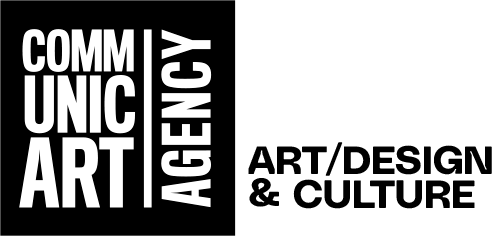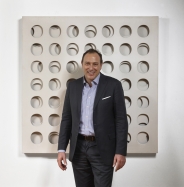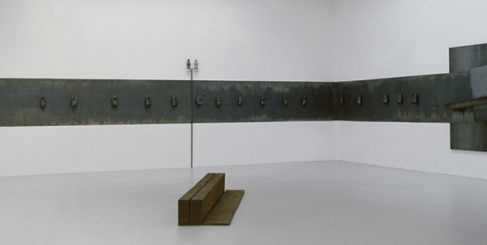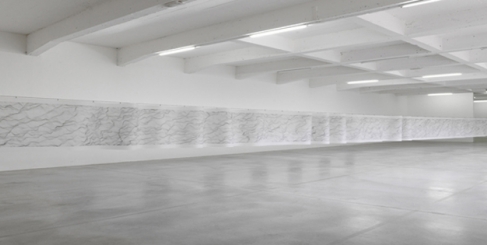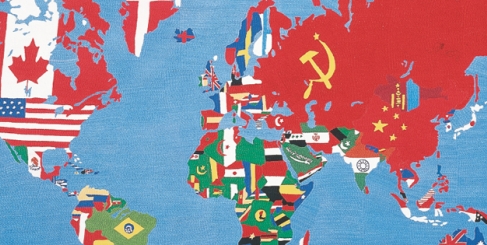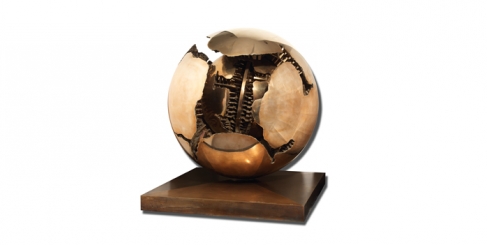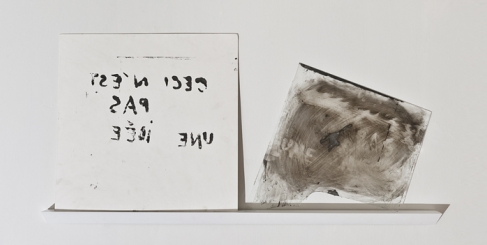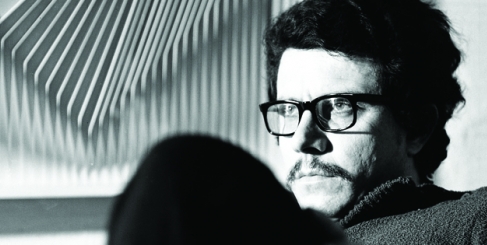News
>>>
20.05.2015
Tornabuoni Art will present at Art Basel Feature Paolo Scheggi's four masterpieces
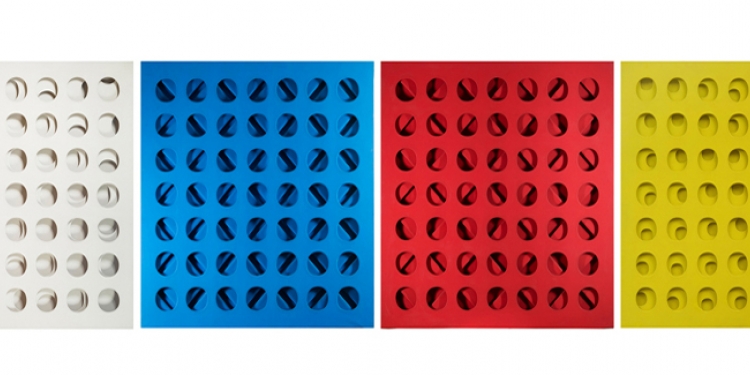
Gathered for the first time since the Venice Biennale of 1966, these four masterpieces will be presented by Tornabuoni Art at Art Basel Feature.
Michele Casamonti's interview, head of the Tornabuoni Art Group
Paolo Scheggi was 26 when he exhibited alongside Lucio Fontana and Agostino Bonalumi at the 1966 Venice Biennale. How did this artist rise so quickly among the best of his time?
Having left Florence, as soon as he arrived in Milan, Paolo Scheggi was in direct contact with Dadamaino, Bonalumi, Castellani, etc. He found himself among this young generation of artists between 25 and 30 years old, who followed the new path opened by Lucio Fontana.
There was thus a dialogue, a very direct exchange between all these protagonists. I would like to point out that Lucio Fontana had a close dialogue with Paolo Scheggi, a connection such that he wrote letters and particularly one very important letter published in several catalogues, in which Fontana writes explicitly and recognizes ''Your work is very intelligent, and logical, even if divergences exist between us, that works in your favor. You are a man of your time […]. I like you inquiries, your research and your canvases so profoundly black, red, white that reveal your thoughts, your fears. I can only wish you a ''happy'' career and remind you to stay humble, very humble. We are ''nothing'' against time. ''
He declares a profound admiration, consideration for Paolo Scheggi’s personality, as well as for his work. So much so that in this letter, at the same time as he reminds him to stay humble, he recognizes that he literally adores, these paintings with "a red so red, a black so black, a white so white" as wrote Fontana.
Scheggi’s presence in this context was thus unfleeting and not occasional; on the contrary, he was an extremely significant presence among an absolute avant-garde group.
For Art Basel, you are recreating the room occupied by Scheggi during the Biennale of 1966, how did you bring about this project?
The Biennale of 1966 is extremely important for the artistic research that developed in Milan, for the impact that the monochrome had and the research that artists of the group Azimut/h led.
In the Padiglione Italia, were not only Lucio Fontana with his cuts that became very famous very early on, but also Agostino Bonalumi with a white monochrome painting, and above all Paolo Scheggi who occupied a predominant position. The complete installation exceeded 6 meters in length.
The photos of this installation, I have known since I began this trade, since I discovered and studied the work of Scheggi as well as the relationships between these protagonists on the occasion of this Biennale.
I had the opportunity to come into possession of one of the four paintings exhibited at the Biennale of 1966, I knew where two others were (in private collections), and finally I was able to get in touch with a museum in Germany, the Museum für Konkrete Kunst of the city of Ingolstadt, which has held for several years, the fourth work.
It was a complicated project but it was natural, essential to realize the dream of reconstituting the entire installation after 49 years.
This project was initially born for the big retrospective we are going to open in October at the Tornabuoni Art gallery in Paris, but as the occasion was so important and so beautiful we decided to document and announce this exhibition through the recreation of the whole installation at Art Basel Feature.
For this edition of Art Basel, you are going to publish a specific exhibition catalogue to celebrate this event, celebrate the reunion of these paintings after 49 years. What is the content of this catalogue and why will it anticipate the 12th catalogue dedicated to Paolo Scheggi for the retrospective of next autumn?
I don't know when the next reunion of the four paintings of the Venice Biennale of 1966 will take place. I jumped on this once-in-a-lifetime opportunity, for me and for the gallery, to celebrate the work which represents this reconstitution with a document that reconstructs not only this installation at the Biennale but the whole history of Paolo Scheggi's participation in this Biennale.
We undertook very focused archival research in order to find all the pictures and photos of Scheggi from his participation in the Biennale, but also before, such as for instance, the photo of Scheggi in his studio, surrounded by the four paintings. Also the documents concerning his participation in the Biennale and those of the Pavillon Italia, magnificent and unpublished photos by Julio Le Parc, Lucio Fontana, Agostino Bonalumi and other protagonists of this Biennale including extraordinary photos by Denise René, Ileana Sonnabend, etc.
It was a very good opportunity to collect and publish them in a volume published for Art Basel 2015 and which constitutes a first volume, soon to be followed by a second bigger, larger, more generalized one, which will be dedicated to the retrospective of Scheggi in Paris in October. The editing of the catalogue is supervised by Luca Massimo Barbero, curator of the October exhibition, who is not only in charge of the Associazione Paolo Scheggi, but also the foremost expert on Scheggi’s work and the senior curator of the Peggy Guggenheim Collection of Venice.
We hear a lot about Scheggi during the sales of contemporary art today, what is the evolution of this market according to you?
The public sales of the last 4 years show that Scheggi’s paintings are still arousing the interest of collectors. All the paintings are not only sold, but the prices also exceed every time, by two, three, even four times, the highest estimations.
The proof of the evolution of the market concerning Scheggi was the sale of a single painting, Intersuperficie Blu - Opera 6 from 1965, for the first time in December 2006 during the sale Porro & C. in Milan and for the second time in October 2014 at Sotheby's London. During the Italian sale, this painting was sold €29, 000 (hammer price), and during the English sale the painting found a buyer for the price of €437,885 (hammer price), this is a progression of more than 1,800 %.
It is impossible and useless to judge the evolution of a market on the basis of a single painting; the truth is that last year still we wondered if a work by Scheggi could reach one million euros during a public sale. One of the last ones sold, on February 11th 2015, during the sale at Christie's London, reached the hammer price of €1,319,178.
There are few paintings on the market because his production was quite limited. Paintings of exceptional quality can be counted on fingertips, and collectors are prepared to do anything to add these works to their collections, knowing that once an opportunity is passed, there is not much chance that the same opportunity will arise again. That is why the prices are soaring, and exceeding all the expectations of the last years.
Today for one quality Scheggi, one must expect between half a million and a million dollars.
Italy and its artists seem more than ever to be attracting the crowds in the auction rooms, as well as in the museums, where one can see a lot of exhibitions dedicated to Post-War Italian art... How do you explain such an interest for this artistic scene?
The magnificent Fontana retrospective at the Musée d’art Moderne de la ville de Paris, the exhibition "Azimut/h. Continuity and Newnessin" at the Peggy Guggenheim Collection in Venice, the upcoming exhibition "Alberto Burri: The Trauma of Painting" at the Guggenheim in New York are examples of exhibitions that demonstrate the interest of the general public and Italian art collectors.
There is an interest because the Italian cultural scene of the early 60s, especially in the Milanese context, developed around Fontana. He is really one of the main sources of the language developed in contemporary art today.
It is thus normal that collectors who collect today’s contemporary artists want to go to the sources of this art, find the sources of this language, of this cultural change that happened after World War II. They are collectors who like the work of Fontana, Manzoni, Castellani, Boetti, Scheggi, etc.
You are preparing an important exhibition dedicated to Scheggi in the gallery for next October, can you tell us more about it?
The exhibition of next October will be the richest retrospective ever dedicated to the artist in a private gallery. The solo show will map out the path, the fundamental stages of his brief but very intense artistic career.
The exhibition will be based on paintings on metal of the end of the 50s via the first Intersuperficie of the beginning of the 60s with irregular and organic forms, and arriving to the works of the second part of the 60s: his installations.
An important part of the book we are going to publish will be focused on the last part of his artistic career which is dedicated to speech, to research on words, to writing, to performance and thus to works that very few collectors know, dating from 69, 70 and 71, an almost unknown part of his work, that for me is extraordinary, and one which will constitute the richest surprise for visitors and critics.
